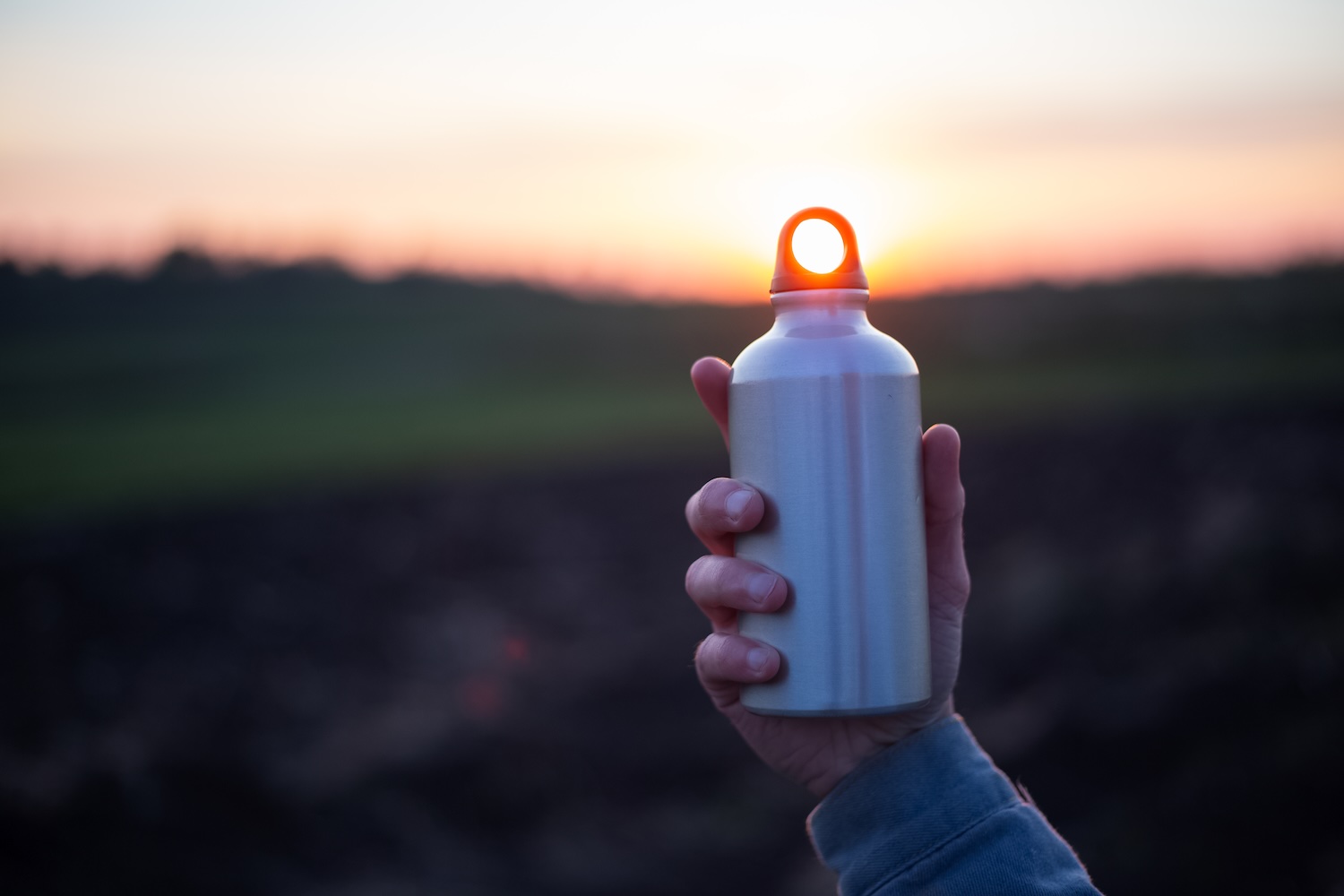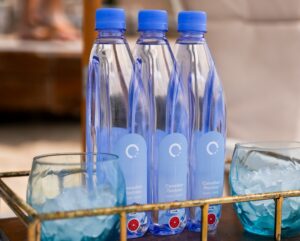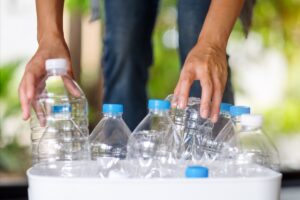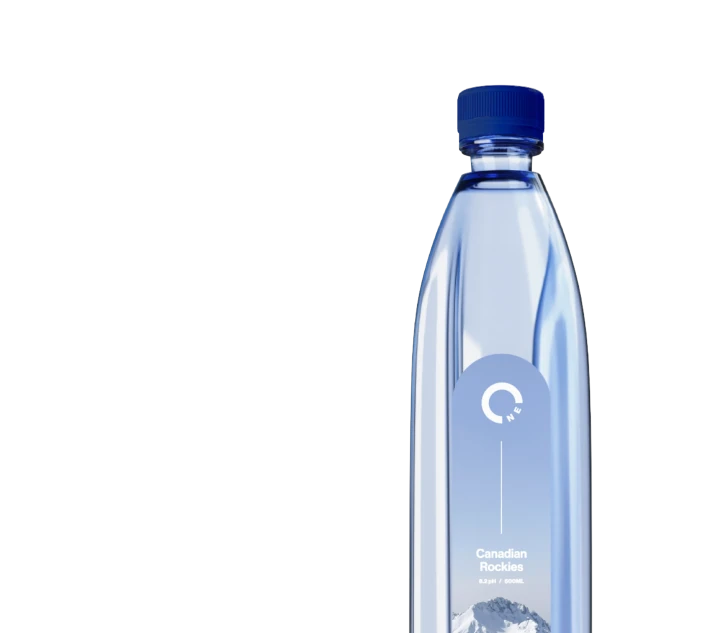Plastic pollution has prompted many consumers to seek alternatives, with aluminum bottles often being marketed as a more eco-friendly option. They’re sleek, reusable, and infinitely recyclable, but does that mean they’re truly the best choice?
While aluminum water bottles offer some clear benefits over most plastic options, they also come with trade-offs in terms of production, taste, and safety.
Here’s a closer look at what makes aluminum attractive, where it falls short, and why One Water’s design offers a more sustainable path forward.
Aluminum Water Bottles and Sustainability: A Closer Look
Aluminum has earned its reputation as a more sustainable alternative to plastic, but the whole story is more complex.
To understand its role in sustainability, it’s essential to examine the full life cycle, from production to recycling.
The Recyclability Advantage of Aluminum
Aluminum has a strong sustainability factor thanks to its recyclability. In fact, recycling aluminum uses up to 95% less energy than incorporating new aluminum from raw materials, and many aluminum bottles and cans in circulation today are made from recycled content.
Recycling aluminum also prevents the release of millions of tons of greenhouse gases annually, and aluminum can be reused indefinitely without losing integrity.
That means the same material can re-enter circulation over and over again, making it one of the few packaging materials that can truly close the loop.
However, aluminum’s benefits only reach their full potential when recycling rates are high. In areas where people don’t recycle out of habit, aluminum is more likely to end up in landfills — and producing new, virgin aluminum is far from eco-friendly.
Aluminum’s Production Footprint
Producing virgin aluminum requires heavy energy and extensive mining, which contribute to high carbon emissions.
As a result, aluminum is only environmentally friendly when recycling systems function efficiently. Unfortunately, recyclability varies depending on your location. Here are some key facts that highlight this balance:
- Aluminum cans in the U.S. contain approximately 71% recycled content, a slight decrease from 73% in 2019.
- Only about 43% of aluminum cans were actually recycled in the U.S. in 2023, a decline from previous years.
These figures show the tension between aluminum’s potential and the reality of global recycling rates. While the material can be highly sustainable, its actual impact depends heavily on collection and reprocessing systems.
The Problem With Non-BPA Liners in Aluminum Bottles
Another overlooked issue with aluminum bottles is the use of liners. Because aluminum can corrode when in contact with water, many bottles rely on thin plastic or BPA-based linings.
These liners complicate recycling, undermine sustainability claims, and raise concerns for those who prioritize pure taste and health.
When a bottle contains a liner, the aluminum and plastic components must be separated during the recycling process. This process is not always possible in standard municipal recycling facilities, resulting in some bottles being downcycled or discarded altogether.
How Aluminum Affects the Drinking Experience
The choice of bottling material directly impacts how water tastes and feels. In the case of aluminum water bottles, they don’t consistently deliver the clean, crisp experience consumers expect.
Taste & Purity
One of the most common complaints about aluminum water bottles is the metallic aftertaste. While liners help reduce this, they aren’t always perfect, especially if bottles are scratched or exposed to high heat.
For many people, the goal of choosing a premium water bottle is to enjoy water that tastes clean and natural. Unfortunately, aluminum doesn’t consistently deliver on that promise.
Safety & Consistency
The use of plastic or chemical liners raises questions about long-term safety.
If bottles are damaged or repeatedly exposed to high temperatures, there’s a risk of leaching, which could compromise the purity of the water inside.
When choosing a reusable water solution, peace of mind about safety and purity should take priority in your search.
Why One Water Is the More Sustainable Solution
Unlike aluminum, One Water’s bottles are designed to solve sustainability challenges from the ground up.
Instead of relying on recycling systems or liners, they are engineered for purity and long-term environmental benefits.
Designed With Intention
One Water takes sustainability beyond marketing claims with a bottle designed intentionally. Each feature is crafted to reduce environmental impact while ensuring a premium user experience:
- Snap-to-Stack efficiency that saves space and lowers shipping emissions by up to 35%.
- No liners or coatings, which guarantees both purity and easier recyclability.
- BPA-free materials that are safe and environmentally responsible.
- Durable, reusable, and fully recyclable to give you the option of using every day or recycling responsibly.
Purity That You Can Taste
Every bottle of One Water is crafted to deliver a crisp, clean taste with no metallic aftertaste or uncertainty from liners.
Our water is sourced responsibly from some of the most pristine springs on Earth, and the packaging ensures that purity is maintained from source to sip.
Ultimately, the intentional design paired with ethically sourced spring water ensures that every sip reflects a commitment to both the planet and the consumer. We aim to go beyond offering another bottled water option to establish a new standard for sustainability in the industry.
Rethinking “Better” Water With One Water
Aluminum bottles represent progress compared to single-use plastic, but they’re not the ultimate solution. Their production footprint, reliance on liners, and impact on taste highlight real limitations.
One Water offers a more thoughtful alternative: bottles that combine sustainability, purity, and premium design without compromise.
Discover One Water’s balance of purity and sustainability today!




